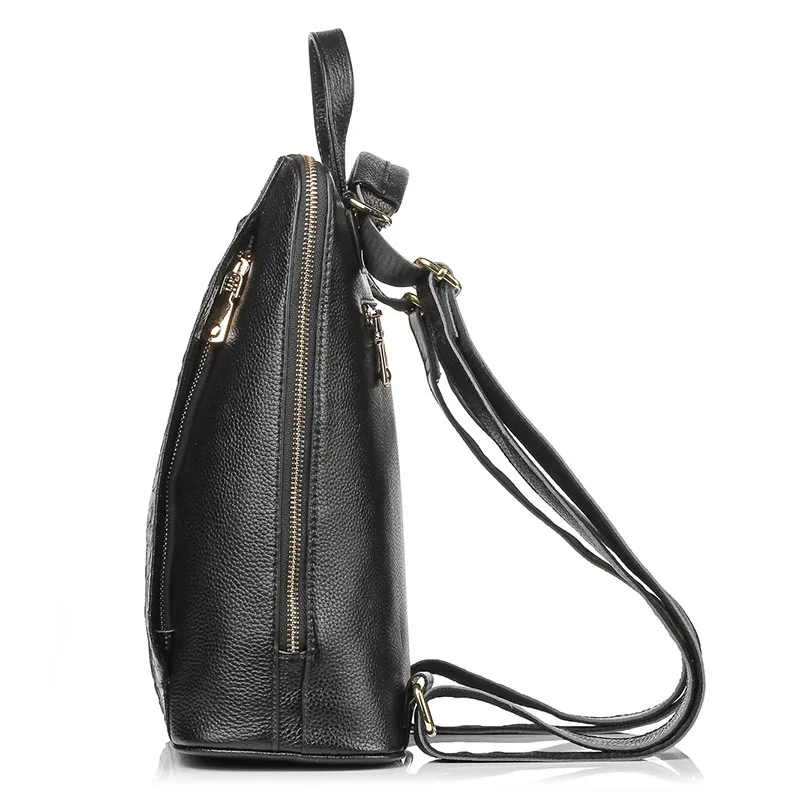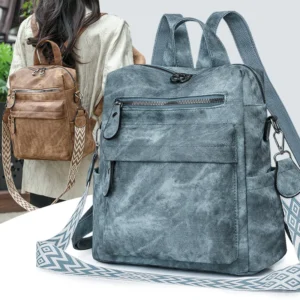1. Introduction: Why Proper Leather Bag Care Matters
Quality leather bags represent more than just a fashionable accessory—they’re genuine investments that can provide decades of reliable service when properly maintained. Unlike mass-produced synthetic alternatives, premium leather develops a rich character over time, telling the story of your journeys together through its evolving patina.
The difference between well-maintained leather and neglected leather is dramatic. With proper care, full-grain leather ages gracefully, becoming more supple and developing a rich, unique character that can’t be replicated. Without maintenance, even the finest leather can dry out, crack, and deteriorate within just a few years.
Throughout this comprehensive guide, you’ll discover essential techniques for cleaning, conditioning, protecting, and storing your leather bags. You’ll learn how leather conditioning and waterproofing techniques work together to maintain your bag’s integrity, along with specific approaches for different leather types.
At Summit Carry, we craft our full-grain leather backpacks to last for generations—but even the finest leather requires proper attention to reach its full potential. The care routines you establish today will determine how your leather bag looks and performs for years to come.
2. Understanding Different Leather Types and Their Care Requirements
Before diving into specific maintenance techniques, it’s crucial to identify what type of leather your bag is made from, as each variety has unique characteristics and care requirements.
Full-Grain Leather
- The highest quality leather available, incorporating the entire top layer of the hide
- Recognizable by visible natural grain, occasional imperfections, and rich texture
- Develops a beautiful patina over time
- Requires regular conditioning to maintain moisture balance
Top-Grain Leather
- Slightly processed to remove imperfections, resulting in a more uniform appearance
- Thinner and more flexible than full-grain
- More stain-resistant due to added finish
- Needs less frequent conditioning but benefits from regular protective treatment
Smooth Leather
- Aniline: Minimally processed with transparent dye, showing natural markings
- Semi-aniline: Light protective coating while preserving natural appearance
- Pigmented: Coated with polymer and pigment for color consistency and protection
- Care varies based on finish level—less finished leathers need more frequent conditioning
Suede and Nubuck
- Created from the underside of the hide (suede) or top-grain that’s been buffed (nubuck)
- Characterized by soft, fuzzy texture rather than smooth surface
- Highly absorbent and susceptible to staining
- Requires specialized cleaning tools and protectants
Patent Leather
- Coated with plastic or varnish for high-gloss appearance
- Waterproof but prone to cracking if not properly maintained
- Requires special cleaning products to preserve shine
Understanding the specific type of leather your bag is made from provides the foundation for proper care. Many of the leather backpack styles explained in our guide require slightly different maintenance approaches, making correct identification an essential first step in preservation.
3. Essential Care Products for Your Leather Maintenance Kit
Building a well-stocked leather maintenance kit is an investment in your bag’s longevity. While you don’t need dozens of products, having the right tools for specific needs makes proper care much simpler.
Cleaning Products
- pH-neutral leather cleaners (avoid household soaps which can strip natural oils)
- Specialized suede/nubuck cleaners (if applicable)
- Saddle soap (for more intensive cleaning of smooth leathers)
Conditioning Products
- Leather conditioner or cream for moisturizing
- Mink oil or neatsfoot oil for deeply dried leathers (use sparingly)
- Lanolin-based conditioners for water resistance
Protection Products
- Leather protectant spray for general use
- Specific leather waterproofing products for weather protection
- Suede/nubuck protectors (formulated differently than smooth leather versions)
Application Tools
- Soft microfiber cloths for cleaning and product application
- Soft-bristled brushes for cleaning textured leathers
- Suede brush and/or eraser for napped leathers
- Cotton swabs for reaching crevices around hardware
Storage Accessories
- Dust bags for storage protection
- Acid-free tissue paper for stuffing
- Cedar blocks or lavender sachets to deter pests
Quality matters significantly more than quantity when building your leather care toolkit. A few well-selected products appropriate for your specific leather type will yield better results than a cabinet full of generic options. Look for products without harsh chemicals, alcohol, or petroleum distillates that can damage leather fibers.
4. Daily and Weekly Maintenance: Prevention is Key
The most effective leather care strategy focuses on prevention rather than correction. Establishing simple daily and weekly habits will drastically reduce the need for intensive treatments later.
Daily Practices
After each use, take a moment for these quick steps that require less than a minute:
* Gently wipe down the exterior with a soft, dry cloth to remove dust and surface dirt
* Handle your bag with clean hands to avoid transferring oils and dirt
* Empty contents when not in use to prevent stretching and distortion
* Place your bag on clean surfaces, never directly on floors
* Keep away from direct sunlight, heat sources, and areas with extreme temperature changes
Weekly Maintenance
Set aside 5-10 minutes weekly for more thorough care:
* Empty the bag completely and clean the interior with a lightly dampened cloth
* Inspect for any spots, stains or issues that need attention
* Check and clean around hardware (zippers, buckles, clasps)
* Gently brush suede or nubuck bags to restore nap
* Ensure proper storage position—hanging straps can stretch while overstuffing can distort shape
These simple preventive measures make an enormous difference in your bag’s longevity. For example, immediately blotting water drops prevents water stains, while regular inspection catches minor issues before they become major problems.
The leather commuter backpack care tips we’ve compiled are particularly valuable for bags that face daily use, as frequent handling and exposure to various environments require more vigilant preventive maintenance.
5. Deep Cleaning Techniques for Smooth Leather
While regular maintenance reduces the need for deep cleaning, occasionally your leather bag will require more thorough attention to remove accumulated dirt and oils. This process should be approached carefully—too much cleaning can be as harmful as too little.
When to Deep Clean
- When surface dirt doesn’t come off with regular wiping
- When the leather appears dull or has visible soiling
- After exposure to unusually dirty environments
- No more than 2-3 times annually for regularly used bags
Preparation Steps
- Empty the bag completely
- Test any cleaning products on an inconspicuous area first
- Work in a well-ventilated area with good lighting
- Gather all necessary tools: cleaner, multiple cloths, small bowl of water
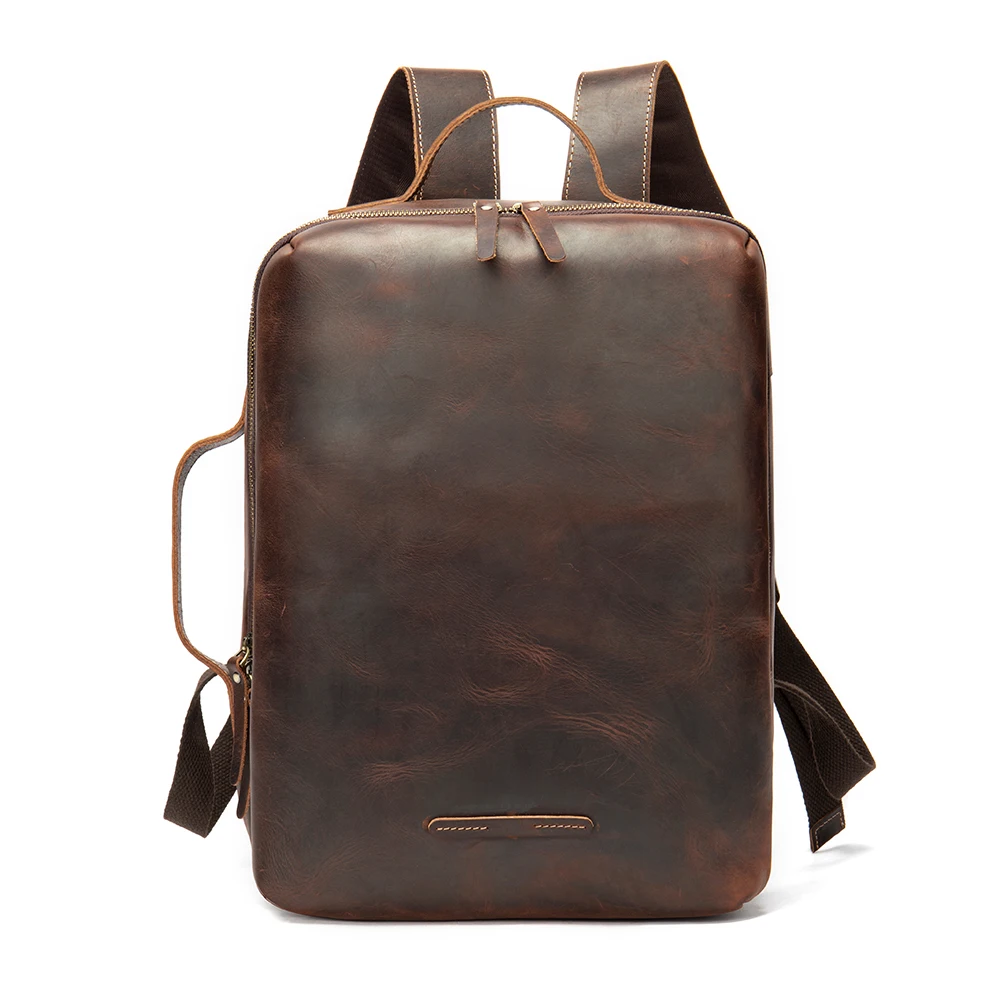
Cleaning Process
- Begin by thoroughly dusting the surface with a soft, dry cloth
- Dampen (not soak) a clean cloth with leather cleaner or very mild soap solution
- Wring out excess moisture—the cloth should be barely damp
- Work in small sections using gentle circular motions
- Pay special attention to handles, edges, and areas around hardware where dirt accumulates
- Follow immediately with a clean, dry cloth to remove residue and excess moisture
- Allow the bag to dry naturally away from direct heat or sunlight
Post-Cleaning Assessment
After cleaning and complete drying, examine the leather’s condition. If it appears dry or less supple than before cleaning, it’s ready for conditioning. The ultimate guide to conditioning leather backpacks offers detailed next steps for restoring moisture after cleaning.
Remember: Never saturate leather with water or cleaner, never use harsh household cleaners, and always give your bag ample time to dry completely before conditioning or using.
6. Conditioning Leather: Restoring Moisture and Suppleness
Conditioning is perhaps the most crucial step in leather care—it replaces natural oils that evaporate over time, preventing the leather from becoming dry, brittle, and prone to cracking. Think of conditioning as moisturizing your leather, just as you would your own skin.
When Conditioning is Needed
- After cleaning (once completely dry)
- When leather feels dry or less flexible
- When the color appears faded or dull
- Typically every 3-6 months, depending on climate and usage
- More frequently in dry climates or heated indoor environments
Conditioning Process
- Ensure the leather is clean and completely dry (should leather dry before conditioning addresses this critical timing)
- Select an appropriate conditioner for your specific leather type
- Apply a small amount of conditioner to a soft cloth, not directly to the leather
- Work in thin layers using gentle circular motions
- Pay extra attention to stress points like handles, corners, and edges
- Allow the conditioner to absorb for 15-20 minutes
- Buff gently with a clean, dry cloth to remove excess product
- Allow 24 hours before applying any protective products
Finding the Right Balance
Under-conditioning leaves leather vulnerable to drying and cracking, while over-conditioning can make leather too soft, potentially affecting structure and causing darkening. The goal is supple leather that maintains its form.
In humid environments, condition less frequently to avoid over-saturation. In dry climates, you’ll likely need to condition more often to combat moisture loss. Listen to your leather—when it begins to feel less supple or look dull, it’s usually time to condition.
7. Waterproofing and Protection: Creating a Defensive Barrier
While quality leather has some natural water resistance, additional protection is beneficial for preventing water damage and stains. Understanding the difference between water resistance and waterproofing is important—leather needs to “breathe,” so complete waterproofing isn’t ideal.
Understanding Leather Protection
- Water resistance: Allows water to bead and roll off temporarily
- Waterproofing: Creates a more substantial barrier against moisture
- Breathability: Essential for leather health, allowing moisture vapor to escape
Application Process
- Start with clean, dry, properly conditioned leather
- Choose a protectant formulated specifically for your leather type
- Hold spray products 6-8 inches away from the surface
- Apply in light, even coats rather than heavy application
- Allow each coat to dry completely (typically 30-60 minutes)
- Apply a second light coat for maximum protection
- Pay special attention to seams and stress points
- Allow 24 hours for complete curing before using the bag
The complete guide to waterproofing leather bags provides more detailed instructions for different leather types and environments. Remember that oiling leather does not fully waterproof it, though it does provide some water resistance along with conditioning benefits.
Reapplication Guidelines
- After deep cleaning procedures
- When water no longer beads on the surface
- Before seasons with heavy precipitation
- Typically every 1-3 months for regularly used bags
Special consideration is needed for suede and nubuck, which require specific protectants that maintain their texture while adding water resistance.
8. Addressing Common Leather Bag Issues: Stains, Scratches, and Water Damage
Even with regular maintenance, leather bags occasionally encounter problems requiring specific treatment. Addressing these issues promptly prevents them from becoming permanent damage.
Water Stains and Damage
- For wet bags: Blot (never rub) excess water immediately with absorbent cloth
- Allow to dry naturally at room temperature, never using direct heat
- For water spots on dry bags: Slightly dampen entire panel for even drying
- For severe water damage: Apply leather conditioner after complete drying to restore oils
Oil and Grease Stains
- Fresh stains: Apply absorbent powder (cornstarch, baking soda) immediately
- Allow powder to sit for several hours or overnight to draw out oil
- Gently brush away powder and assess results
- For persistent stains: Repeat process or use leather degreaser product
- Recondition area after treatment
Ink Stains
- Act quickly—fresh ink responds better to treatment
- For fresh stains: Dab (don’t rub) with alcohol-free baby wipe or leather cleaner
- For ballpoint ink: Try a small amount of non-acetone nail polish remover on a cotton swab
- For permanent marker: Professional assistance typically needed
- Always test cleaning agents on hidden areas first
Scratches and Scuffs
- For light scratches on finished leather: Gently buff with soft cloth
- For deeper scratches: Apply matching leather conditioner and buff
- For color loss: Consider matching leather cream or polish
- For significant damage: Consult professional repair service
Hardware Issues
- Tarnished metal: Clean with appropriate metal cleaner on cloth (avoid contact with leather)
- Stuck zippers: Apply zipper lubricant (never oil)
- Loose hardware: Take to professional for secure repair
Luxury leather backpacks often feature premium hardware that benefits from specialized care to maintain its appearance alongside the leather itself. Remember that some significant issues, particularly with high-end bags, are best addressed by leather care professionals who have the tools and expertise for proper restoration.
9. Proper Storage Techniques to Maintain Shape and Prevent Damage
How you store your leather bag when not in use significantly impacts its longevity and appearance. Proper storage prevents misshapen bags, creasing, mold growth, and color transfer.
Preparation for Storage
- Clean thoroughly before extended storage
- Condition leather to ensure it doesn’t dry out during storage
- Address any stains or issues, as they can set during storage periods
- Remove all contents, including items in hidden pockets
Maintaining Bag Shape
- Stuff bags with acid-free tissue paper or air-filled bubble wrap
- Use enough stuffing to maintain shape without overstretching
- For structured bags, ensure corners and bottom are well supported
- For softer bags, provide even support throughout
- Avoid newspaper (ink transfer risk) and colored tissue (color bleeding risk)
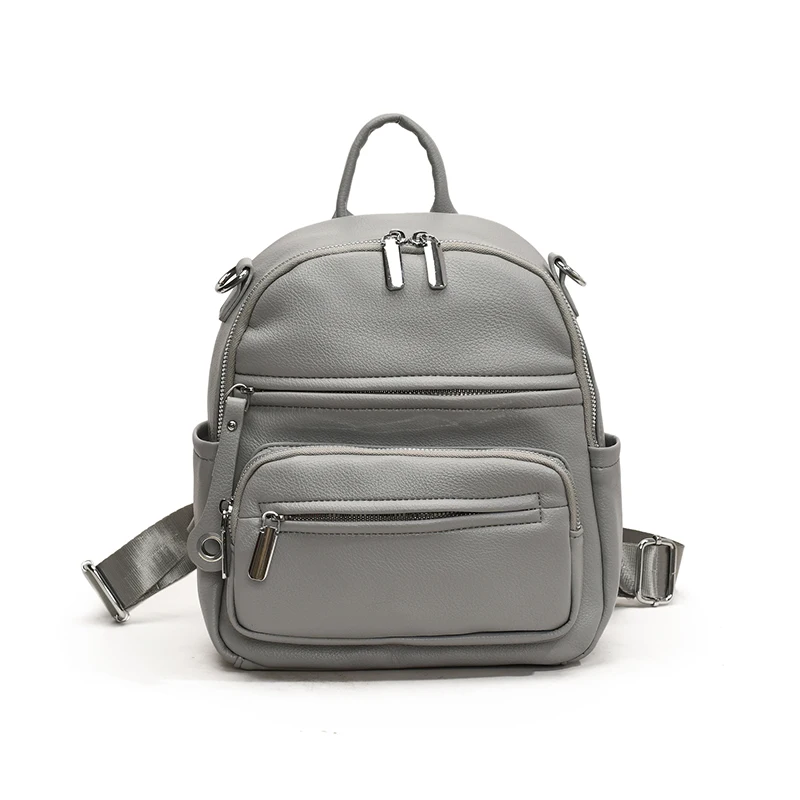
Storage Environment
- Store in cool, dry locations away from direct sunlight
- Avoid attics, basements, or areas with temperature/humidity fluctuations
- Ensure adequate air circulation to prevent mildew
- Optimal conditions: 65-72°F (18-22°C) with moderate humidity
- Consider cedar blocks or silica gel packets for moisture control
Proper Positioning
- Store structured bags upright on shelves
- Hang bags with proper straps using padded hangers
- Use dust bags to protect from dust accumulation
- Avoid stacking heavy bags on top of softer ones
- Rotate stored bags periodically to prevent pressure points
Following proper leather backpack storage techniques is especially important for seasonal bags or those rotated throughout your collection. Even bags worn daily benefit from proper “rest” positioning when not in use.
10. Specialized Care for Suede and Nubuck Leather
Suede and nubuck require significantly different care approaches than smooth leather due to their raised nap (fuzzy texture). Their porous nature makes them more vulnerable to staining while their textured surface requires specialized cleaning methods.
Understanding the Difference
- Suede: Made from the inner split of the hide with a raised nap
- Nubuck: Top-grain leather that’s been sanded or buffed to create a slight nap
- Both are more absorbent and susceptible to staining than smooth leather
Cleaning Techniques
- Daily maintenance: Gently brush with a suede brush in one direction to remove surface dust
- For light soiling: Use a suede eraser with gentle pressure
- For dried stains: Light brushing with a soft toothbrush
- For water spots: Allow to dry completely, then brush gently
- For stubborn stains: Use specialized suede/nubuck cleaner only
- Never use water-based cleaning methods for general cleaning
Protection Methods
- Apply specialized suede/nubuck protector spray before first use
- Hold spray 6-8 inches away for even application
- Allow to dry completely between light coats
- Reapply protection every 4-8 weeks with regular use
- Always test protectant on an inconspicuous area first
Restoring Texture
- For flattened areas: Gently steam with kettle (holding bag 12 inches away)
- Follow steaming with immediate brushing to lift nap
- For matted areas: Use suede brush in multiple directions to restore texture
Our collection of leather backpacks includes both smooth and textured options, each requiring their specific care approaches to maintain their distinctive appearance.
14 Inch Leather Laptop Backpack, Brown Leather Backpack, Men's Leather Backpack, Vintage Leather Backpack
Price range: $177.28 through $199.12 Select options This product has multiple variants. The options may be chosen on the product pageCarry On Leather Backpack, Roll Top Leather Backpack
Price range: $77.76 through $96.48 Select options This product has multiple variants. The options may be chosen on the product pageDesigner Mini Backpack, Mini Leather Backpack, Small Leather Sling Backpack, Women's Leather Backpack
Price range: $95.76 through $98.80 Select options This product has multiple variants. The options may be chosen on the product pageDesigner Mini Backpack, Designer Women's Backpack, Mini Leather Backpack, Women's Leather Backpack
Price range: $135.92 through $137.64 Select options This product has multiple variants. The options may be chosen on the product pageBlack Leather Backpack, Small Leather Backpack, Women's Leather Backpack
Price range: $112.96 through $116.12 Select options This product has multiple variants. The options may be chosen on the product page- Price range: $80.72 through $108.04 Select options This product has multiple variants. The options may be chosen on the product page
11. Patent Leather Maintenance: Keeping the Shine
Patent leather’s glossy, reflective finish requires care methods quite different from other leather types. Its sealed surface offers excellent protection against staining but can be prone to cracking and scuffing if improperly maintained.
Understanding Patent Leather
- Created by applying a high-gloss polyurethane or acrylic coating to leather
- Waterproof but sensitive to alcohol, oil, and extreme temperatures
- Prone to cracking if the coating dries out or is exposed to harsh conditions
Cleaning Approaches
- Dust regularly with a soft cloth
- For fingerprints and light smudges: Wipe with a slightly damp cloth
- For more stubborn marks: Use a mixture of mild soap and water
- For cleaning without residue: Window cleaner on a cloth works well
- Dry immediately and thoroughly after any wet cleaning
Maintaining Shine
- Use patent leather-specific products for shine restoration
- Apply a small amount of petroleum jelly for quick shine touch-ups
- Commercial patent leather restorers help with scuffs and dullness
- Never use standard leather conditioners or oils on patent leather
Storage Considerations
- Use tissue paper between patent leather surfaces to prevent sticking
- Store in dust bags that allow some air circulation
- Keep away from heat sources which can cause coating to soften or bubble
- Avoid contact with dark-colored materials that might transfer dye
12. Seasonal Leather Bag Care: Adapting Your Routine
Different seasons present unique challenges for leather care. Adapting your maintenance routine to seasonal conditions helps protect your bag from specific environmental threats.
Spring/Summer Care
- Increase protection against UV exposure which can fade and dry leather
- Watch for mildew development in humid conditions
- Clean more frequently if wearing lighter-colored clothing that may transfer dye
- Apply leather protector more often if exposed to summer rainstorms
- Keep leather bags out of direct sunlight during peak summer hours
Fall/Winter Care
- Apply additional waterproofing before rainy/snowy seasons begin
- Clean and condition more frequently when exposed to heated indoor environments
- Address salt stains immediately to prevent permanent damage
- Allow wet bags to dry completely before storage or next use
- Keep leather away from direct heat sources used for warming spaces
Year-Round Consistency
- Maintain regular cleaning regardless of season
- Adjust conditioning frequency based on climate conditions
- Store properly even during seasons of regular use
- Keep leather care products at appropriate temperatures for effectiveness
For those who travel frequently, understanding DIY leather care for travel backpacks becomes especially important as your bag encounters rapidly changing environments and conditions.
13. Creating Your Leather Bag Maintenance Schedule
Establishing a regular maintenance schedule transforms leather care from a reactive chore to a simple routine. This organized approach ensures nothing is overlooked while preventing maintenance overload.
Daily Practices (1-2 minutes)
- Wipe down exterior with soft cloth after use
- Empty contents when not in use
- Store properly in dust bag or on shelf
Weekly Habits (5-10 minutes)
- Clean interior with soft brush or vacuum attachment
- Check and clean hardware
- Inspect for new stains or issues requiring attention
- Brush suede/nubuck bags to maintain nap
Monthly Maintenance (15-20 minutes)
- Surface cleaning with appropriate leather cleaner
- Inspect edges and corners for wear
- Check stitching for any loose threads
- Clean around hardware more thoroughly
Quarterly Care (30-60 minutes)
- Deep clean if necessary
- Condition leather thoroughly
- Reapply protective treatments
- Check and treat handles and stress points
Annual Assessment
- Consider professional cleaning for valuable pieces
- Maintain hardware with appropriate polishes
- Evaluate overall condition and address any developing issues
- Deep condition before extended storage
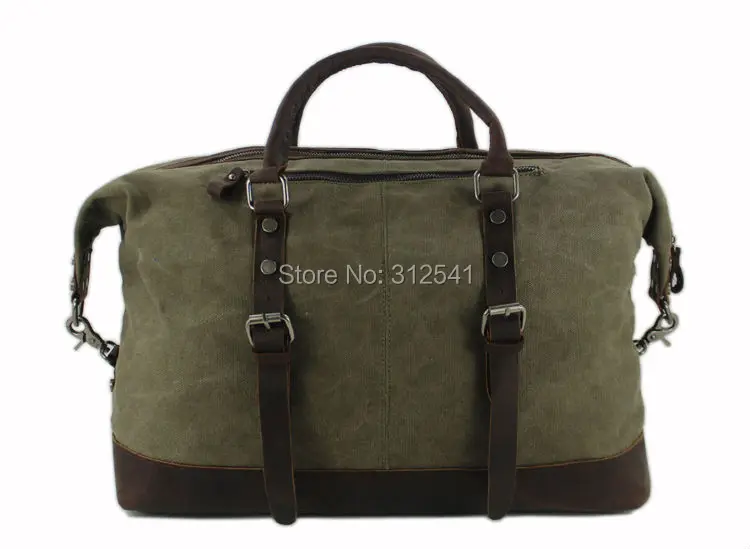
This schedule can be adjusted based on how frequently you use your bag. Men’s leather backpacks used daily for commuting may need more frequent attention than those reserved for occasional use.
14. When to Seek Professional Leather Care
While many leather care tasks can be handled at home, certain situations warrant professional expertise. Knowing when to seek professional help can save a valuable bag from permanent damage.
Situations Requiring Professional Care
- Severe staining (ink, oil, wine, unknown substances)
- Structural damage including tears or separated seams
- Color loss or need for color restoration
- Hardware that needs replacement or repair
- Vintage bag restoration requiring specialized knowledge
- Water damage affecting a large area
Finding Qualified Leather Professionals
- Look for specialists with experience specific to handbags/backpacks
- Ask about their experience with your specific leather type
- Request examples of previous repair work
- Consider leather repair shops, high-end cobblers, or manufacturer repair services
Questions to Ask Before Service
- What techniques and products will be used?
- Is there a guarantee on the work?
- What is the estimated completion time?
- Are there any risks to the current condition?
- What preventive measures should be taken after service?
Cost Expectations
- Basic cleaning services: $30-75
- Conditioning and protection: $20-50
- Minor repairs: $15-60
- Color restoration: $75-200+
- Major structural repairs: $100-300+
Remember that quality professional work, while initially more expensive, can extend your bag’s life by years or even decades.
15. Common Leather Care Myths and Mistakes to Avoid
The world of leather care is unfortunately filled with misconceptions that can damage your valuable leather goods. Understanding these myths helps avoid costly mistakes.
Myth: Household oils make good leather conditioners
Reality: Olive oil, cooking oils, and petroleum jelly can turn rancid, creating odors and attracting dirt. They can also oversaturate leather, causing darkening and structural weakening. Always use products specifically formulated for leather conditioning.
Myth: Shoe polish works well on leather bags
Reality: Shoe polishes often contain harsh dyes and waxes designed for footwear, not bags. These can create buildup, transfer to clothing, and potentially damage leather bag finishes.
Myth: Wet leather should be dried quickly with heat
Reality: Direct heat causes leather to dry unevenly, leading to cracking and warping. Always allow leather to dry naturally at room temperature, stuffed with paper to maintain shape.
Myth: Baby wipes are safe for leather cleaning
Reality: Most baby wipes contain alcohol and chemicals that dry out and damage leather over time. Use only pH-balanced leather cleaners for safe cleaning.
Myth: All leather products need frequent conditioning
Reality: Over-conditioning is as harmful as under-conditioning. Most bags need conditioning only 2-4 times per year, with frequency based on climate and usage.
Myth: Household cleaners are fine for tough stains
Reality: Products like Windex, bleach, or ammonia-based cleaners destroy leather’s structure, strip natural oils, and can cause discoloration. Always use leather-specific cleaning products.
Vintage leather backpacks are particularly vulnerable to damage from these common myths, as older leather often requires more careful handling and appropriate products.
16. Is My Leather Bag Beyond Saving?
Even severely neglected leather can often be restored with proper care, though there are limits to what can be reversed. Understanding the difference between surface damage and structural failure helps determine if restoration is possible.
Signs of Serious Condition Issues
- Deep cracking that goes through multiple layers
- Delamination where layers of leather separate
- Severe brittleness that causes leather to break when flexed
- Structural failure at stress points like handles or seams
- Extensive mold growth that has penetrated beyond surface
Assessment Questions
- Is the damage primarily cosmetic or structural?
- Does the leather still have flexibility, or is it brittle?
- Is the basic structure of the bag intact?
- Are repairs needed in stress-bearing areas?
- Would repair costs exceed the replacement value?
Options for Severely Damaged Bags
- Professional restoration for valuable or sentimental pieces
- Repurposing leather into smaller items
- Using as a pattern template for replacement
- Salvaging hardware for other projects
Success Stories
Many bags that appear beyond salvation can be restored by skilled professionals. Dried leather can be rehydrated, color can be restored, and even structural issues can often be repaired with proper techniques and materials.
17. Can I Use the Same Products on All My Leather Items?
While maintaining a minimal leather care kit is convenient, understanding when products can be shared versus when specialized formulations are needed helps achieve optimal results across your leather collection.
Shared vs. Specialized Products
Cleaners:
* General pH-neutral leather cleaners work on most smooth leathers
* Specialized cleaners are required for suede, nubuck, and exotic leathers
* Dedicated patent leather cleaners contain different solvents than regular cleaners
Conditioners:
* Basic conditioners work for most smooth leathers
* Heavier bags may benefit from sturdier conditioners than those used on clothing
* Footwear often requires more robust conditioning than handbags
* Colored conditioners should never be used across different-colored items
Protectants:
* General leather protectants work on most smooth leathers
* Suede/nubuck require specific protectant formulations
* Outdoor gear may need heavier-duty waterproofing than fashion items
Building a Cost-Effective Collection
- Start with quality universal products for smooth leather
- Add specialized products only as needed for specific leather types
- Consider multi-purpose products designed for several leather types
- Invest more in quality conditioners and protectants than in cleaners
18. How to Test New Products on Your Leather Bag Safely
Before applying any new product to your entire leather bag, proper testing helps prevent potential damage. This cautious approach is particularly important with vintage, expensive, or uniquely colored leathers.
Testing Methodology
Select an inconspicuous test area:
* Bottom corner of bag
* Inside flap or pocket
* Underside of a strap
* Back side that doesn’t face outwardApply minimal product:
* Use a cotton swab for precise application
* Apply a small amount to an area approximately the size of a dime
* Follow product instructions exactly for test areaObserve and wait:
* Allow full recommended drying time
* Check for adverse reactions:- Color changes
- Texture changes
- Stiffening or excessive softening
- Residue or stickiness
If no negative reaction occurs:
* Wait 24 hours for any delayed reactions
* Proceed with full application following proper techniques
If a negative reaction occurs, immediately remove as much product as possible with a clean, dry cloth. If the product has already dried or absorbed, consult a leather care professional for remediation options.
This testing approach provides confidence before applying products to your entire bag, preventing potentially irreversible damage to treasured leather goods.

